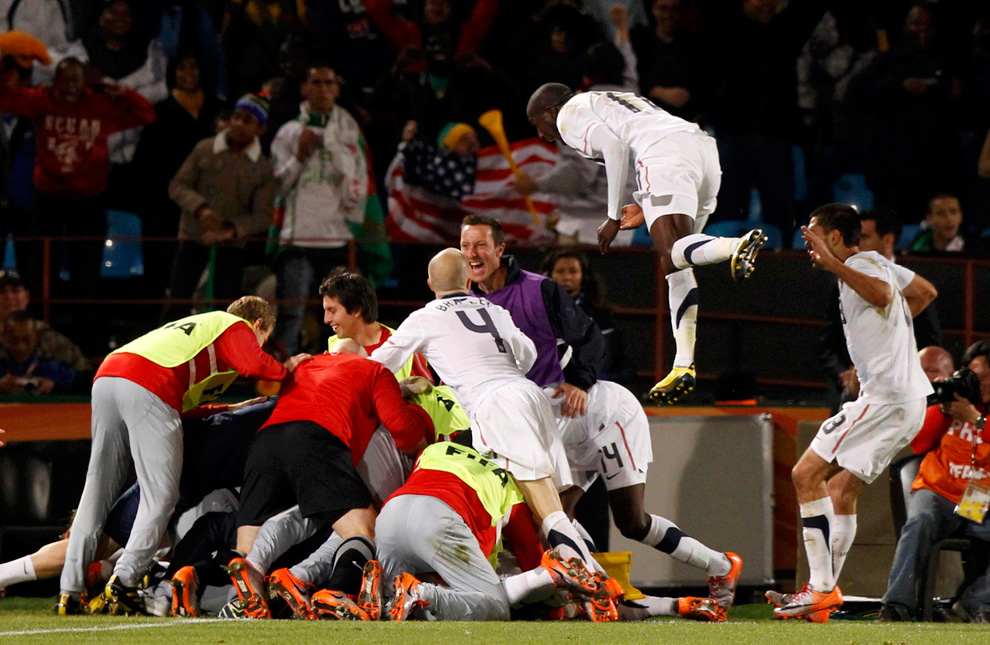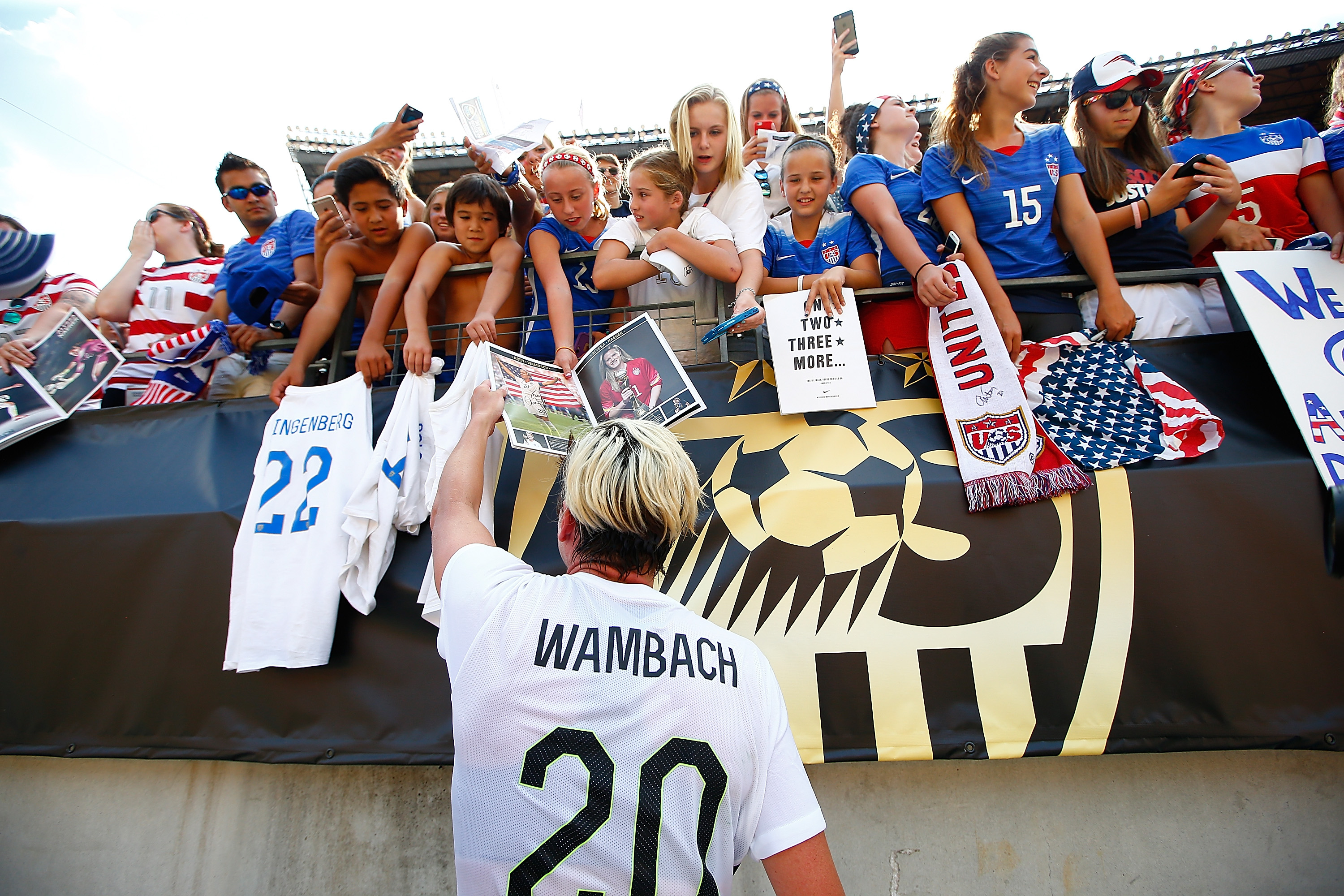What do you think of when you think of the beginning of US Soccer’s modern era? Naturally, you would think of the Men’s National Team participating in the 1990 World Cup or when they qualified for the tournament defeating Trinidad and Tobago with Paul Caligiuri’s “Shot heard round the world.” No, the true beginning of US Soccer’s modern era happened eight months before Caligiuri’s shot and hardly anyone knows the story.
The US U-20 Men’s National Team went on a magical run in the 1989 FIFA World Youth Championship, now known as the U-20 World Cup. Without any experience or success from USMNT predecessors since the 1950 World Cup, the young Americans battled through the 16 team tournament and despite suffering two losses to future 1994 World Cup champs Brazil, finished 4th in the tournament. It was their best result in any FIFA tournament on any level since the 1930 World Cup and gave the hope that maybe there’s something for the future. It seems fitting that while the current U-20 Men’s National Team now faces Serbia with a chance to get back to the Semifinals, we look back to the team that started it all and started US Soccer’s modern era.
The start of US Soccer’s modern era almost never happened at all. In April 1988, the US U-20 Men’s National Team played in the 1988 CONCACAF U-20 Tournament. This would also be used for qualification to the 1989 FIFA World Youth Championship in Saudi Arabia. Only two countries would qualify for the tournament and in the final group, Costa Rica and Mexico beat out the United States and Cuba to represent CONCACAF in Saudi Arabia. It wasn’t until a few months after the tournament where the United States may still be going to Saudi Arabia after all.
The Cachirules scandal was one of the biggest soccer scandals to hit CONCACAF the 80’s. The Mexican Football Federation knowingly used overage players to play for their youth teams and then lied about their ages. CONCACAF banned the U-20 team from the FIFA World Youth Championship and also banned their national teams from FIFA competitions for two years. Because of this, not only did the United States get into the World Youth Championship but it also freed up the spot for the US to qualify for the 1990 World Cup. So maybe the whole Graham Zusi getting Mexico into the 2014 World Cup thing was a payback for getting the US started.
Anyway, with the exclusion of Mexico, the United States would be off to Saudi Arabia in February of 1989 for the World Youth Championship. They would be paired into a group which consisted of Brazil, East Germany and Mali and despite having less experience, less playing time and having never played against such international teams like these, the United States held their own in the tournament. They drew Mali 1-1 in their first game, defeated East Germany 2-0 and closed out their Group C run losing to Brazil 3-1. Even with only three points (FIFA gave two points for a win back then), the United States finished 2nd in the group and advanced to the Knockout Stage.
The manager for the US U-20 Men’s National Team, and arguably one of the most important people in the early days of US Soccer’s modern era was Bob Gansler. Gansler, a US Soccer Hall of Famer, managed the U-20 team in the World Youth Championship as well as the 1990 World Cup team. Gansler was instrumental in being able to find young talent and nurture them into being solid international players for future World Cups. He also had the task of pretty much building the US player pool almost entirely from scratch and having to choose mostly amateur and college players. Some players that he helped discover were Kasey Keller (starting GK for the 1989 US U-20 Team), Tony Meola, John Harkes, Peter Vermes, Eric Wynalda and Marcelo Balboa. Though it was a tall task and the odds were stacked, Gansler helped build the foundation for the United States and is a big reason why the USA has qualified for every World Cup since 1990.
Back to the Knockout Stage. With only 16 teams in the tournament, the Knockout Stage began with the Quarterfinals. Their Quarterfinal opponent was Iraq and went out to an early lead. Chris Henderson took the lead for the United States in the 17th minute but Iraq equalized rather quickly after. According to FIFA’s technical report, which was the only thing I could find that talked about the game, said that Iraq had dominated major parts of the game and when Dario Brose scored in the 56th minute to take the lead once and for all, Iraq was stunned and disappointed.
After the 2-1 win over Iraq, the United States faced Nigeria in the Semifinal game. The result seemed to work the other way around from the Iraq game. While there was no score in the first half, Nigeria scored first in the 47th minute. Sure enough, just like the opposite of the Iraq game, the United States would equalize with a Steve Snow penalty. The game went into extra time but in extra time, Nigeria prevailed. After a mistake by future USMNT legend and Hall of Famer Kasey Keller, Nigeria scored in the 93rd minute and advanced to the Final while the United States went to the 3rd place game.
Apologies for the picture but here are the highlights from that Nigeria/USA game. As an added bonus, check out the end of the video to see then 19 year old Kasey Keller’s long hair. It was definitely a different time back then.
In the 3rd place game, the United States would face Brazil for a second time and just like in the Group Stage, the result remained the same. Brazil won 2-0 and the United States, though lost their final two games, finished 4th and had a dream tournament. I found it interesting looking back into the FIFA technical report about the game, I found this gem of a quote.
“The character of this game once again raised the question as to whether the play-off for third place is necessary, since these matches often turn out to be a bit of an anti-climax. After the disappointment of their elimination by Portugal, the Brazilians were not very interested in pushing themselves in this game, and the Americans, who had taken themselves to their physical limits already, had little left to give on this occasion. A somewhat livelier second half compensated the spectators for the lack of excitement of the first forty-five minutes.”
Interesting to note that even FIFA, at one point, pointed out why we even have the 3rd place game in the first place.
While not many people in the States noticed what the US U-20 Men’s National Team, it did get some notice among those in the soccer world. In an interview when the US played Brazil, Pele praised the team for their work in getting to that point and had hope for the future for US Soccer. I’m also envious of that pimp white suit Pele was wearing. Talk about style.
As the United States U-20 Men’s National Team arrived back home, nobody knew that it would be the start of something bigger. They didn’t know it at the time but eight months later, Caligiuri had his “Shot” and the rest is history. The United States would qualify for every World Cup after 1990 and slowly but surely, become a soccer nation. Bob Gansler said it best when talking about the United States’ performance in the tournament and why he felt it was important to grow the modern game and to be a part of the game when it was in its infancy.
“We already have made history, at least in the US. This is the furthest we’ve gone. I think we’ve had a good learning experience here. We learned by winning some, losing some, tying one. I think this gives us an excellent platform from which to elevate our game in the future… This is the beginning of the game in our country…I just felt that eventually we’re going to gain a prominent place in the soccer world and I thought perhaps I could help.”
Now, in just 26 years, the United States has seen a steady rise. Even this summer, the USWNT is going for their third Women’s World Cup title, the USMNT has beaten both the Netherlands and Germany in come from behind wins in Europe and the U-20 USMNT is going to face Colombia for a shot at matching what their predecessors did in 1989. Looking forward to the continuous growth over the next 26 years.






